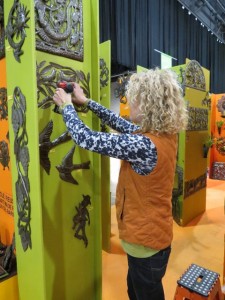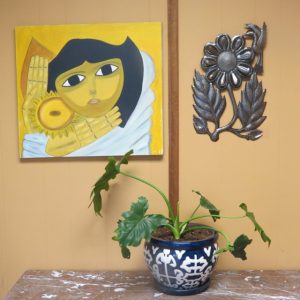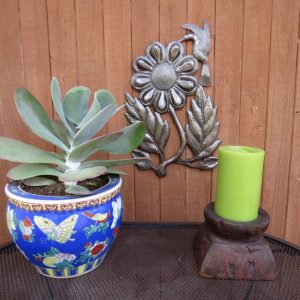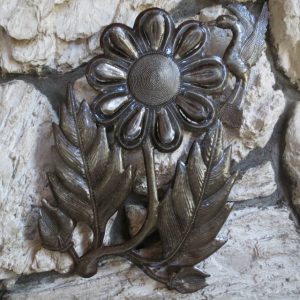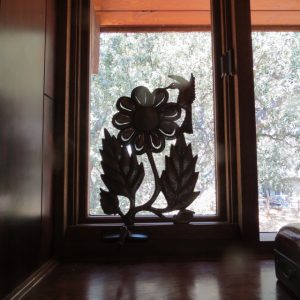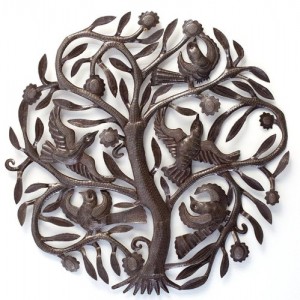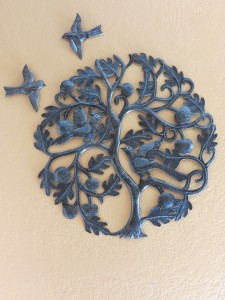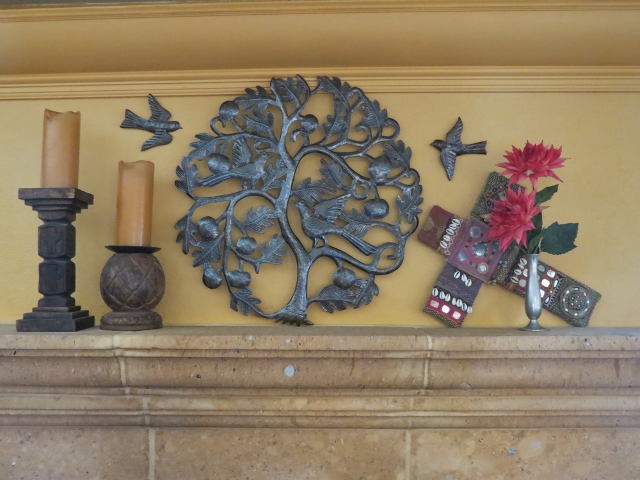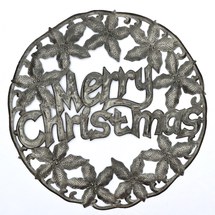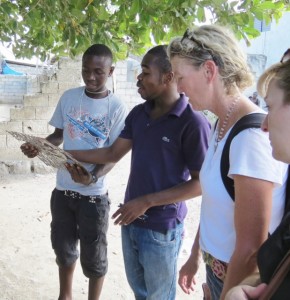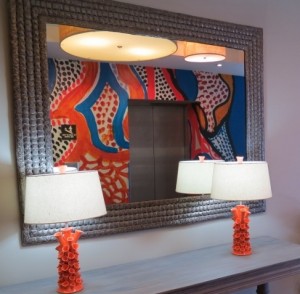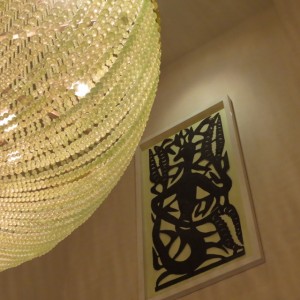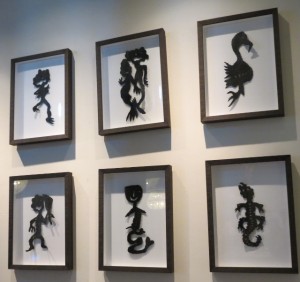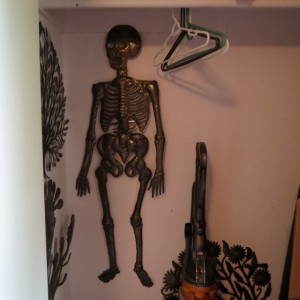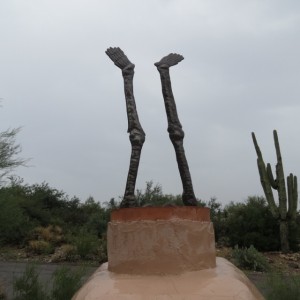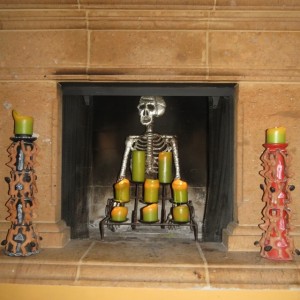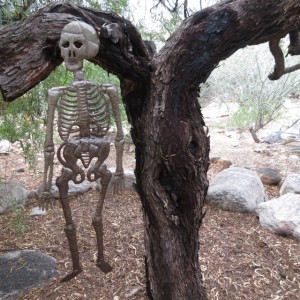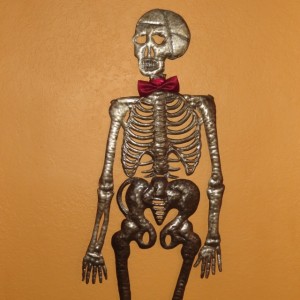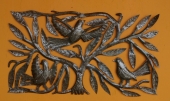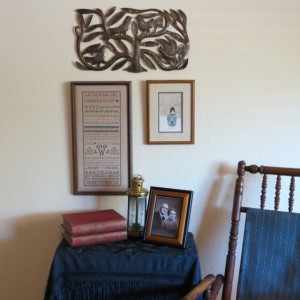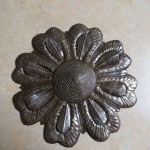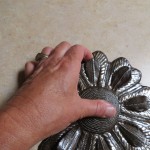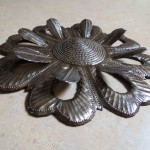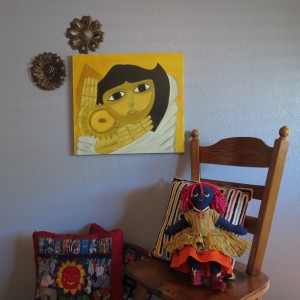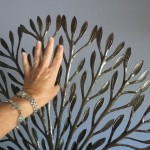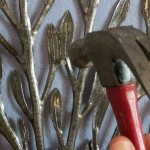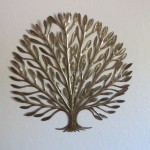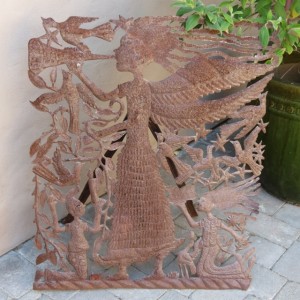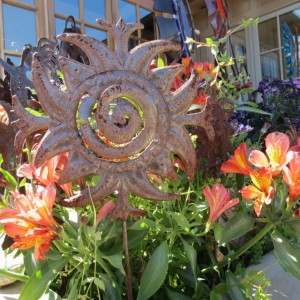July 2, 2015

A Haitian version of Lady Godiva created by John Sylvestre using and entire 55-gallon barrel.
When I am in Haiti looking at sculptures, I have to admit that sometimes, I get overwhelmed. There are so many, everywhere! Each workshop has them on the walls both inside and out, there are sculptures stacked on tables, on the floor, in the rafters – virtually every available space is fair game for display or storage. At the end of the day, it is a bit like not seeing the forest for all of those trees.
And yet, even at the end of the day, sometimes the scope and mastery of a piece will jump out and grab me. The forest becomes visible again. It happened to me most notably in the workshop of John Sylvestre, one of the first artists with whom we collaborated and, indeed, one of the proverbial “Old Masters.”
John, now in his late fifties, learned from Janvier Louisjuste, who learned from the orignal metal art master, Georges Liataud. Starting as a laborer at the age of twelve, John was a quick study. He soon headed his own atelier and began forming his own style, with a body of work that is tender, sensual and otherworldly. The piece that stopped me in my tracks was a tropical version of Lady Godiva. (above) The execution of detail was superb, but the design element that got me and held me fast was its size. The whole barrel had been used in its creation.
There is something to the old adage that “bigger is better.” To use a movie analogy, “Avatar” is entertaining on a 46″ diagonal flat-screen, but in the theater, it’s AMAZING. It needs to be big. It’s richness is fully realized only when it is projected on a grand scale.
So it is with Haitian metal art. Some design images are sweet and cute and need to be expressed as a suggestion or a hint, rather than a statement. Others crave to be boldly expressed or they lose their intrinsic intensity and their power is lost. An entire barrel, when completely utilized, gives the artist a “canvas” that is 34″ x 72″. A hummingbird that size would be weird and ridiculous and possibly scary, for whatever fineness there may be in texture and line. But Lady Godiva, champion of the poor, executed in near life-size is stunning. Her pride and her elegant bearing are fully communicated. Similarly, the Angel Couple on our website seem as divine, projecting the grandeur and infinity of Heaven. With them in large scale, you are drawn there too. A slice of Heaven is yours.
How great is that?
Contributed by Linda for it’s Cactus

